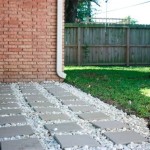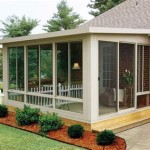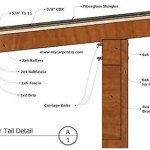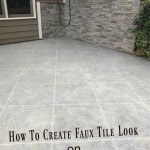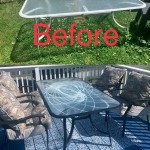Patio Furniture Rehab: Restoring Outdoor Comfort and Aesthetics
Patio furniture, exposed to the elements year-round, invariably suffers wear and tear. Sun, rain, wind, and temperature fluctuations contribute to fading, rust, mildew, and general degradation. Rather than discarding these weathered pieces, a thorough patio furniture rehab can breathe new life into them, saving money and reducing landfill waste. This process involves a combination of cleaning, repair, and refinishing, tailored to the specific material of the furniture.
Effective patio furniture rehab requires a systematic approach. A preliminary assessment identifies the extent of the damage and determines the necessary steps. This assessment should consider the type of material (wood, metal, plastic, wicker, or a combination), the condition of the finish, the presence of rust or mildew, and any structural damage. Once assessed, a detailed plan for restoration can be formulated, including a list of necessary tools and materials.
Key Point 1: Preparing for the Rehab Process
Prior to any restoration efforts, a thorough cleaning is essential. This removes dirt, grime, mildew, and loose paint or rust, providing a clean surface for subsequent repairs and refinishing. The cleaning method varies depending on the material. For wood, a mild soap and water solution with a soft-bristled brush is typically sufficient. A pressure washer can be used with caution, employing a low-pressure setting to avoid damaging the wood. Metal furniture often benefits from a stronger cleaner, such as a degreaser, to remove oily residues. Plastic furniture can be cleaned with a general-purpose cleaner and a scrub brush. Wicker requires careful attention to avoid damaging the delicate fibers; a vacuum cleaner with a brush attachment can remove loose debris, followed by a gentle cleaning with a damp cloth.
Following the initial cleaning, a more targeted cleaning may be necessary to address specific issues. Mildew, a common problem on outdoor furniture, requires a specialized mildew cleaner. These cleaners typically contain bleach or other antifungal agents. Rust, prevalent on metal furniture, can be removed with a wire brush, sandpaper, or a chemical rust remover. It is essential to follow the manufacturer's instructions when using any chemical cleaner and to wear appropriate safety gear, such as gloves and eye protection.
Surface preparation is a crucial step in achieving a durable and aesthetically pleasing finish. Sanding removes old paint, rust, and imperfections, creating a smooth surface for the new finish to adhere to. The grit of the sandpaper should be progressively finer, starting with a coarser grit to remove heavy buildup and finishing with a finer grit to smooth the surface. For metal, a rust-inhibiting primer should be applied after sanding to prevent future rust formation. For wood, a wood filler can be used to repair any cracks or holes before priming.
Key Point 2: Repairing Structural Damage
Beyond surface imperfections, patio furniture often sustains structural damage over time. This may include broken slats, loose joints, or damaged frames. Addressing these issues is essential for restoring the furniture's functionality and safety. The repair methods vary depending on the type of material and the extent of the damage.
For wooden furniture, broken slats can be replaced with new wood of the same type and dimensions. The new slat should be securely fastened to the frame with wood glue and screws or nails. Loose joints can be strengthened by re-gluing and clamping the pieces together until the glue dries. In some cases, it may be necessary to disassemble the joint completely, clean off the old glue, and re-glue it. If the frame is damaged, it may require more extensive repairs, such as replacing entire sections of wood. This may involve cutting new pieces of wood to the correct dimensions and joining them to the existing frame with screws, glue, and reinforcing hardware.
Metal furniture can be repaired by welding broken joints or replacing damaged sections. Welding requires specialized equipment and skills, so it may be necessary to hire a professional welder. Alternatively, metal epoxy can be used to bond broken pieces together, although this is generally less durable than welding. Rust damage can weaken metal frames, so it is important to repair any rusted areas before they compromise the structural integrity of the furniture. This may involve grinding away the rust and patching the area with metal filler or welding a new piece of metal in place.
Plastic furniture often presents a challenge for repair due to the difficulty of bonding different types of plastic. However, specialized plastic adhesives are available that can be used to repair cracks and breaks. The surfaces to be bonded should be thoroughly cleaned and roughened to provide a better grip for the adhesive. Clamping the pieces together while the adhesive dries will ensure a strong bond. In some cases, it may be necessary to reinforce the repair with screws or bolts.
Wicker furniture requires careful attention to avoid damaging the delicate fibers. Broken strands can be repaired by weaving in new strands of similar material and color. The new strands should be secured with glue or small tacks. Loose joints can be tightened by re-gluing and clamping the pieces together. If the wicker is severely damaged, it may be necessary to replace entire sections. This involves removing the old wicker and weaving in new wicker in a similar pattern.
Key Point 3: Refinishing for Protection and Aesthetics
Once the cleaning and repairs are complete, refinishing the furniture provides a protective layer against the elements and enhances its aesthetic appeal. The type of finish depends on the material and the desired look. Options include paint, stain, varnish, and sealant.
Painting is a versatile option for wood, metal, and plastic furniture, offering a wide range of colors and finishes. Exterior-grade paint is essential for durability and protection against UV rays and moisture. Applying a primer before painting will improve adhesion and prevent the paint from peeling. Multiple thin coats of paint are preferable to one thick coat, as they are less likely to drip or crack. Spray painting provides a smooth, even finish, but it requires a well-ventilated area and proper safety precautions. Brushing is a more traditional method, but it may leave brush strokes. Applying a clear coat of polyurethane after painting will provide additional protection and enhance the durability of the finish.
Staining is commonly used on wood furniture to enhance the natural grain and add color. Exterior-grade stain is available in a variety of colors and opacities. Applying a wood conditioner before staining will help to ensure an even color. The stain should be applied with a brush or cloth and allowed to penetrate the wood for the recommended time. Excess stain should be wiped off to prevent a sticky or uneven finish. Multiple coats of stain can be applied to achieve a darker color. A clear coat of exterior-grade varnish or sealant should be applied after staining to protect the wood from moisture and UV rays.
Varnish is a clear coating that provides a durable and protective finish for wood furniture. Exterior-grade varnish is formulated to withstand the elements and protect against UV rays and moisture. It is available in a variety of sheens, from matte to glossy. Multiple coats of varnish are typically required to achieve a smooth and durable finish. Each coat should be lightly sanded before applying the next coat to improve adhesion. Sealants provide a similar level of protection, but they are often easier to apply and maintain.
For metal furniture, a rust-inhibiting paint or powder coating is essential for preventing future rust formation. Powder coating provides a durable and long-lasting finish, but it requires specialized equipment and skills. Rust-inhibiting paints are available in a variety of colors and finishes and can be applied with a brush or spray can. Applying a primer before painting will improve adhesion and prevent the paint from chipping.
The proper application of sealant or water repellent, according to the product's instructions, is vital for preserving the integrity of the restored furniture. Regular inspections and touch-ups will further extend the lifespan of the rehabilitated pieces, ensuring continued enjoyment and aesthetic appeal.

Home Patio Furniture Rehab

Patio Furniture Rehab 8 Steps With S Instructables

Reviews Patio Furniture Rehab

Home Patio Furniture Rehab

Home Patio Furniture Rehab

Patio Furniture Rehab 8 Steps With S Instructables

How To Rehab An Outdoor Sectional

Pin On Furniture Rehab

Teak Patio Furniture

12 Outdoor Furniture Makeovers Easier Than You Think
Related Posts

